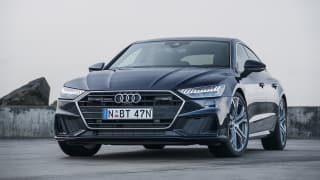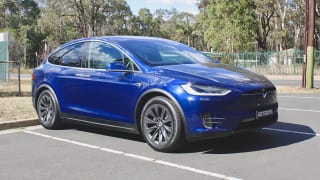Starting with a blank canvas, the I-Pace development team has come up with the same solution as most of the existing and upcoming EVs by putting an electric motor on each axle, and locating the large and heavy battery system along the floor of the body with the rest of the chassis comprised of aluminium. Jaguar boasts that the I-Pace has the brand’s most torsionally rigid structure.
What’s above the floor was arguably the biggest challenge though, with designers needing to combine the freedom of not having to house bulky traditional mechanicals with being instantly recognisable as a Jaguar.
So there’s no need for the traditional long bonnet, with that space put to better use on the inside within an expansive 2990mm wheelbase. The resulting cab-forward, tall-boy look is cleverly disguised by SUV-like side cladding and wheelarch gaps, even though the overall proportions of this ‘SUV’ don’t really conform to the customary tall, two-box shape. It’s also 64mm shorter than an F-Pace SUV.
This is a key distinction from the much bigger and 297mm longer Tesla Model S it will naturally be compared with, which seems to have been designed to look like a conventional five-door luxury hatch like the Audi A7, but ultimately results in a less useful interior for a car of its size.
There’s more detail on this under Practicality, but in a nutshell, the Jag’s taller SUV-like body leaves more room for humans above the batteries.
The I-Pace’s more coupe than SUV-like roofline helps it achieve a slippery 0.29 aerodynamic drag coefficient, and if you think it shares a similar profile to the likes of the Prius, Volt and Ioniq, it’s for this very good reason.
The inside is contemporary Jaguar though, but with surfaces and textures more aligned with the recent E-Pace SUV than the F-Pace from the year prior.
The four trim levels and numerous option packs mean there’s an array of surface options, but colours are generally subtle and materials are soft to the touch. So the designers have resisted going full rocket ship with their first EV.






























